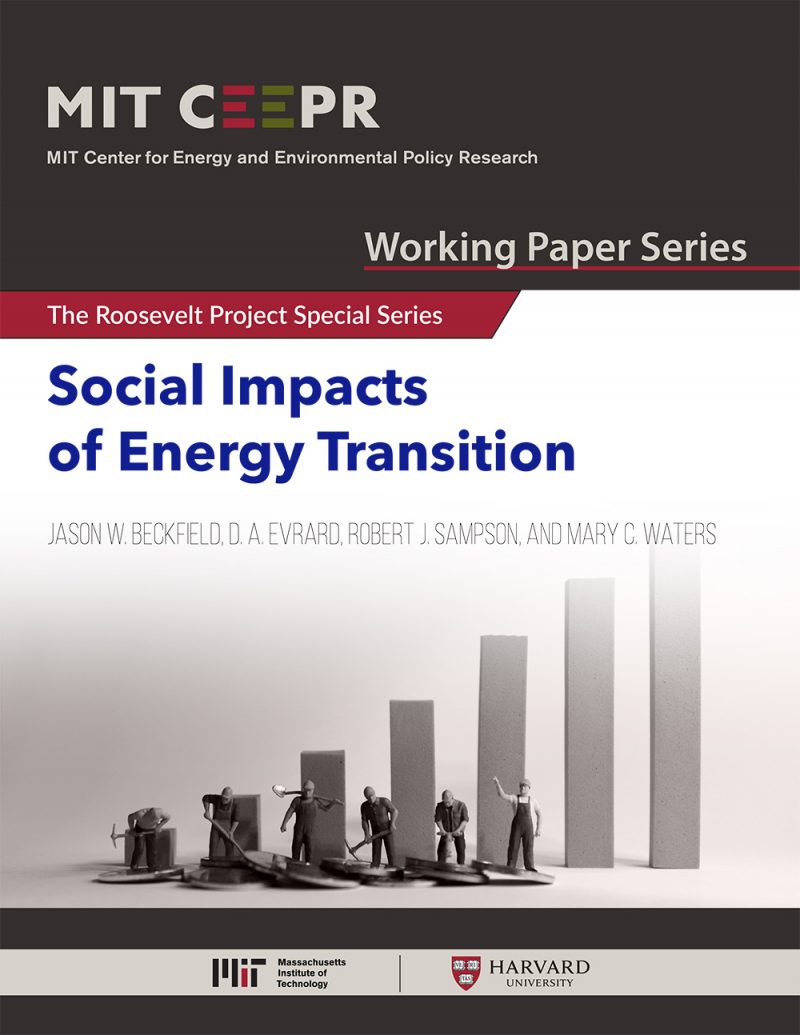Social Impacts of Energy Transition
Jason W. Beckfield, D. A. Evrard, Robert J. Sampson, and Mary C. Waters
September 2020
What happens to people and places as communities transition from one form of energy production and consumption to another? How are the unequal impacts distributed across affected populations? How do the populations themselves change through energy transition? How do the basic structures of community life—families, social networks, schools, local organizations, and social norms—shift as energy-producing communities shift away from the production of coal, oil, and gas?
This paper develops an approach to social impacts of energy transition from concepts and measures from analytical and critical approaches to industrialization, social epidemiology, and disasters. The industrial revolution brought about profound transformations of community life, from the nature of social solidarity, to the rise of economic inequalities by income and wealth, to the relational structure of social conflict, to the formation of large urbanized regions, to the rise of the nuclear family, to the institutionalization of large formal bureaucratic structures. Social epidemiology explains disease distribution as a function of social structures like race, gender, and class; and political structures like citizenship rights, collective bargaining institutions, and political incorporation. The sociology of disasters considers the nature, causes, and effects of rapid, macroscopic exogenous shocks, thus offering conceptual and empirical tools for studying a large-scale change like an energy transition.



